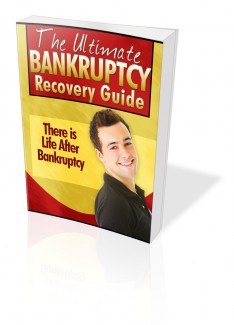 License Type: Master Resell Rights
License Type: Master Resell Rights  File Size: 4,727 KB
File Size: 4,727 KB File Type: ZIP
File Type: ZIP
 SKU: 51877
SKU: 51877  Shipping: Online Download
Shipping: Online Download
Ebook Sample Content Preview:
Using Home Equity to Regain Credit -Getting Some Leverage
In case if you have recently been through a bankruptcy it can be difficult to find the money that you need. The fact is that regardless of how hard you try, it seems that your bankruptcy is always standing in your way; at least for the next 7-10 years.
If this happens to you, you might want to consider looking into getting a bad credit home equity loan in order to help you rebuild your credit and get the money that you need. There are several advantages to using a bad credit equity loan to cover your financial needs, but it will be annoying.
First of all, when you're looking at a bad credit home equity loan, it’s important that you understand exactly what equity is. Equity is basically the amount that you have actually paid toward your house or real estate, in comparison to the actual value of the property.
You have to remember that you will not see a definitive number describing this but a percentage, and this is considered to be an indication of how much the house or property you actually own. The general rule here is that you will want to have as much equity built up as possible. After all, the more it's worth, the better. A house that still has its full mortgage on it isn't going to be worth as much as the same house for the same price when the mortgage has been nearly paid off.
I have to tell you that banks and other lenders look at this when they are considering granting a bad credit home equity loan, because the remaining portion of the mortgage will have to be paid with any money that is gained from selling the house should they need to foreclose on the property.
When you are seeking a bad credit equity loan, the equity that you have built up in your house is generally considered to be completely separate from the actual house. Loans that are taken out on equity are taken out on the house too, but the value of the equity is a much greater deciding factor than the value of the home on its own.
Whether you believe it or not, a bad credit home equity loan really does offer many advantages. Perhaps the best one is that the generally high value of equity can help individuals who have recently filed for bankruptcy to get an interest rate that they might otherwise be unable to receive. These loans also tend to have a higher approval rate, more finance options, and the option to either take out a full loan or to create a line of credit instead.
The fact is that you can get credit again after bankruptcy. Bankruptcy is meant to give you a fresh financial start, and the ability to rebuild credit is part of that new start. Of course, like all good things; there is a process that you have to follow to rebuild credit after bankruptcy and it can be full of pitfalls. Some of these can be avoided.
Don’t take out loans or use credit unless you can afford to make the payments on time. That may sound obvious, but many good consumers make the mistake of taking out loans they can’t afford to pay every day. Don’t get so eager to rebuild your credit after bankruptcy that you feel you need to rush into it. You need to figure out whether or not you can afford the payments. If you assume that you can keep the payments every month, but can afford to miss a few after a while, you will never get your credit up and will likely end up back in debt and worse than before. You’re going to need detailed information to take out a new loan.
Check your budget. If you don’t have one; create one before you even consider applying for new credit. With your budget figure out exactly how much the payment on the new account will be. You can also use a loan calculator which will do all of this for you.
Compare the amount of the payment amount to your available income. Available income means reliable income that is not committed to another area of your budget. Don’t base it on money you might have, work with the money you do have. Don’t forget to leave some for savings/emergencies, so if this new loan payment means you’re spending all of your monthly income, you can’t afford it.
Beware of hidden fees. There are many reputable lenders who specialize in offering second chance loans, but they will have a higher interest rate. This is offered to consumers who have low credit scores or have filed bankruptcy. But not all lenders who will do this are reputable. When you’ve filed bankruptcy and know that your credit options are limited, you may be tempted to accept terms that would normally ridiculous. Lenders know this and some will take advantage of postbankruptcy clients by giving them unnecessary fees, crippling late-payment charges, and hidden costs. It’s more important that you watch out for this after bankruptcy.
Find out exactly what fees and costs are associated with the account. Don’t be lulled into a false sense of security by terms like, “No up-front costs.” Many credit cards that target post-bankruptcy and low-scoring consumers add these “processing charges” and “annual fees” directly to your account—which means that you may receive a credit card with a $250 credit limit and $175 or more in charges already made to the account.
Know the penalties for late payments and going over your credit limit. Often, one late payment can send an account like this spiraling out of control. You miss a $50 minimum payment, and then a $35 late charge is added. Because your new credit limit is low, the late charge puts you over your credit limit, triggering another $35 charge—which, of course, puts you further over your credit limit. By the time your next statement rolls around, your $50 minimum payment has turned into a request for $150 or more to “bring your account current.” And if you aren’t able to make that payment, it just keeps growing. For many post-bankruptcy consumers, that scenario is all too familiar. There’s no room for that kind of error when you’re trying to rebuild after bankruptcy, so be very certain that you know what kind of charges may apply and what circumstances might trigger them.
- File Size:4,727 KB
- License: Master Resell Rights
- Category:Ebooks
- Tags:2014 Ebooks Master Resale Rights








